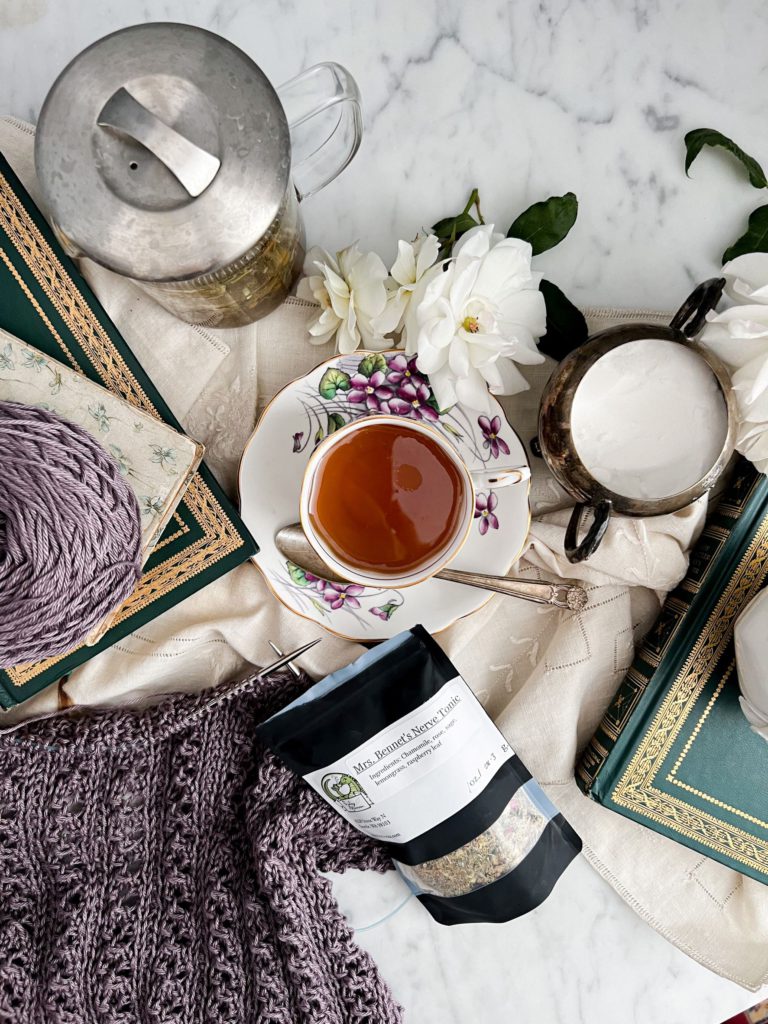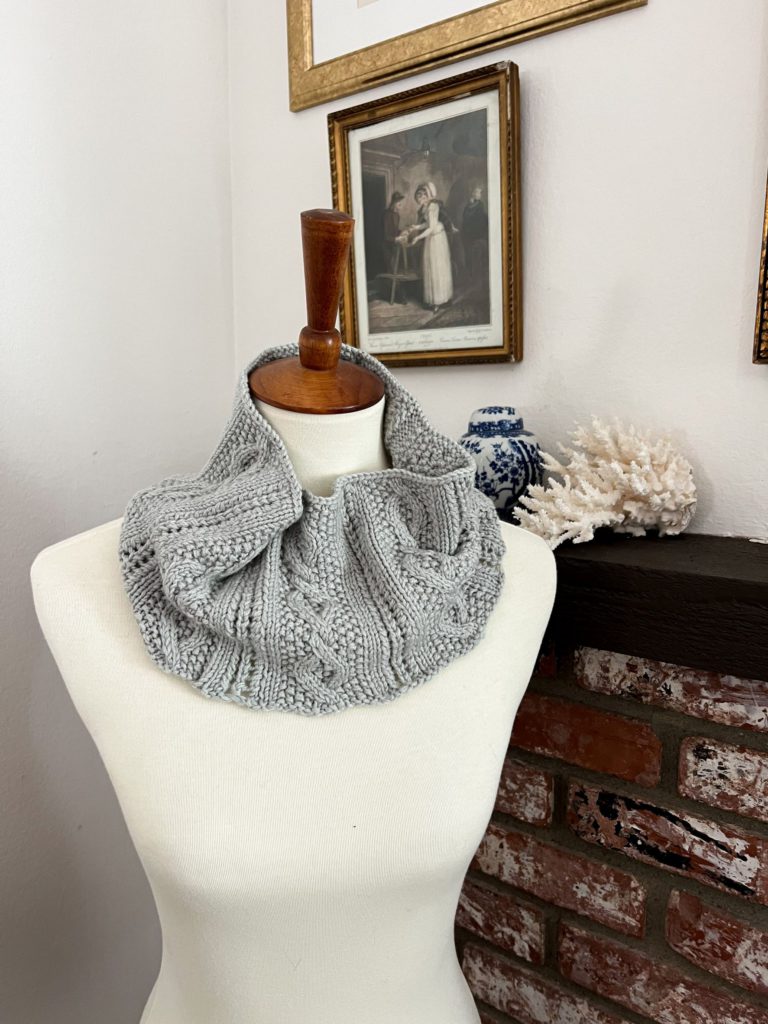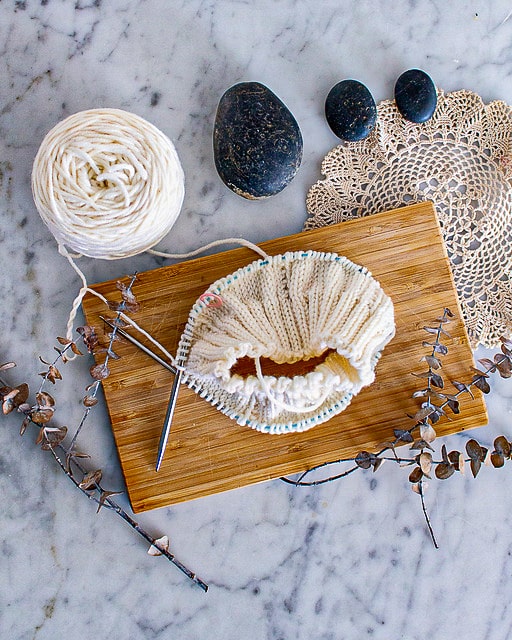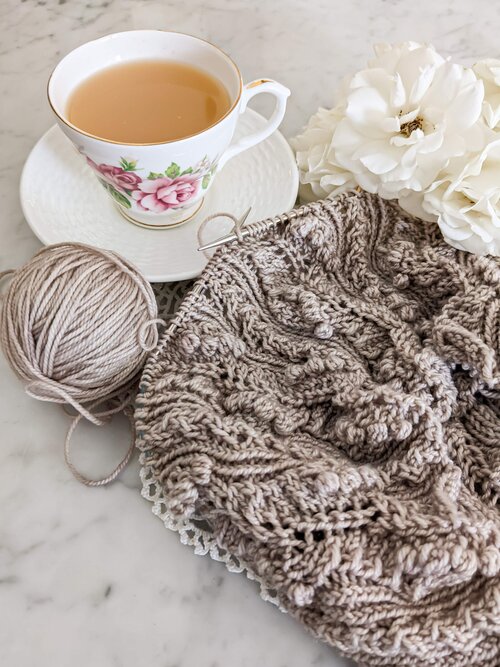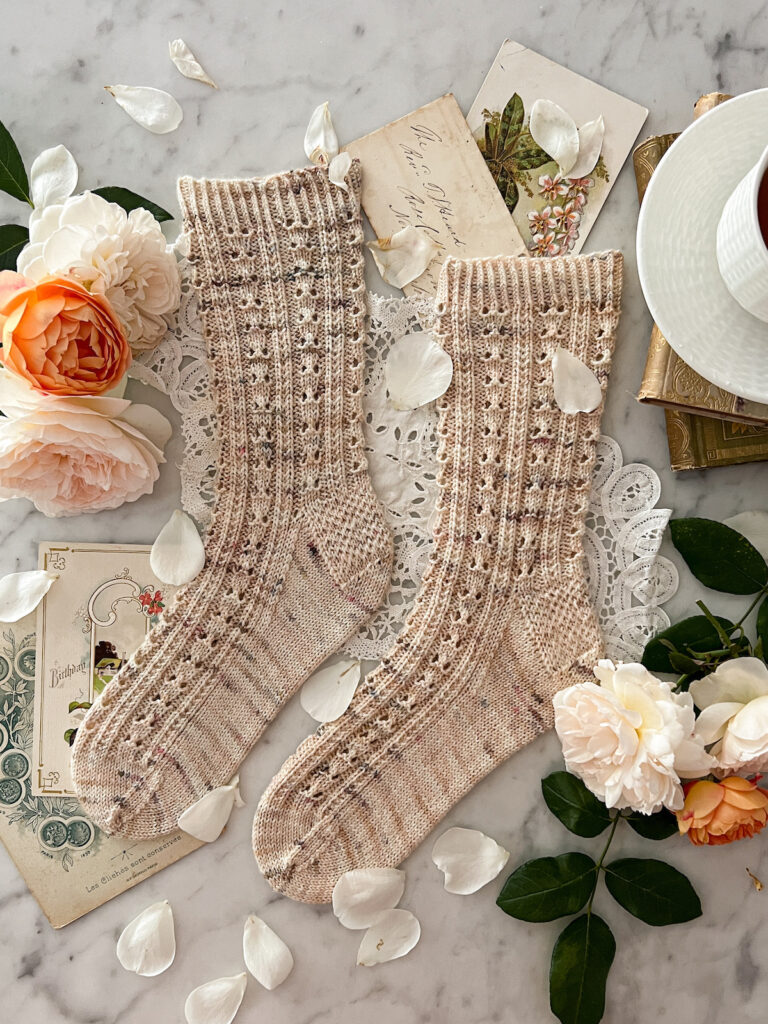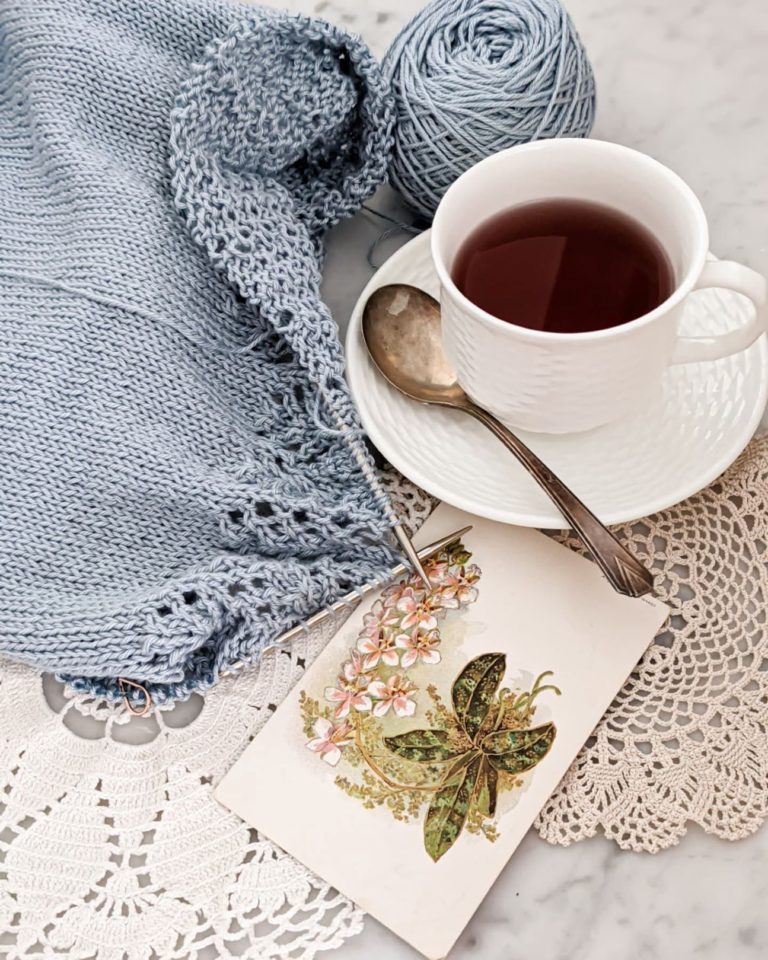This post is part of a series focused on exploring new-to-me varieties of herbal and low-caffeine teas. It is not sponsored content and there are no affiliate links. I promise you that if I ever do use sponsored content or affiliate links on this blog, I will clearly disclose it to you.
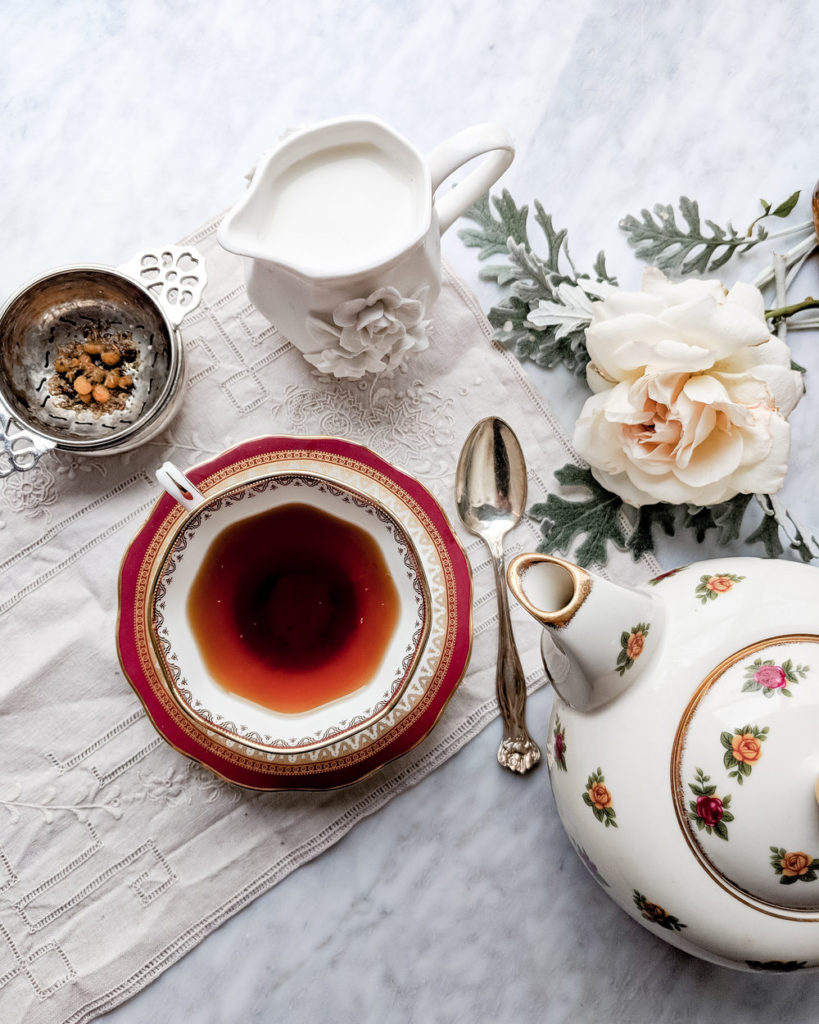
I gave up caffeine last year. Well, to put it more precisely, I had to quit caffeine. I’ve mentioned it elsewhere before, but I might as well be forthright here, too. I had a bad anxiety flare-up, realized the caffeine was exacerbating it, and decided my favorite stimulant had to go.
It wasn’t always like this. Once upon a time, I could have five or six cups of coffee a day with no trouble (okay, maybe some sleep disturbance, but emotionally I was fine). I’ve lived most of my life with a low-level thrum of anxiety, and the caffeine didn’t seem to affect it much until my mid-20s, when I started working in a high-stress law job and realized I was panicking every time I got an email.
That was the first time I quit coffee and took up tea.
But like so many people trying to quit something they really like even though they know it’s not good for them, I fell back into the habit. Motherhood and sleep deprivation encouraged it. By last spring, I was up to a few cups a day again, and found myself so riddled with anxiety that I couldn’t even take my kid for a walk around the block.
I made a lot of other major changes that helped, too (like getting in with a good therapist and doing some hard work there), but quitting caffeine definitely improved things. Ever since then, I’ve been on the search for other delicious, hot beverages to replace my coffee.
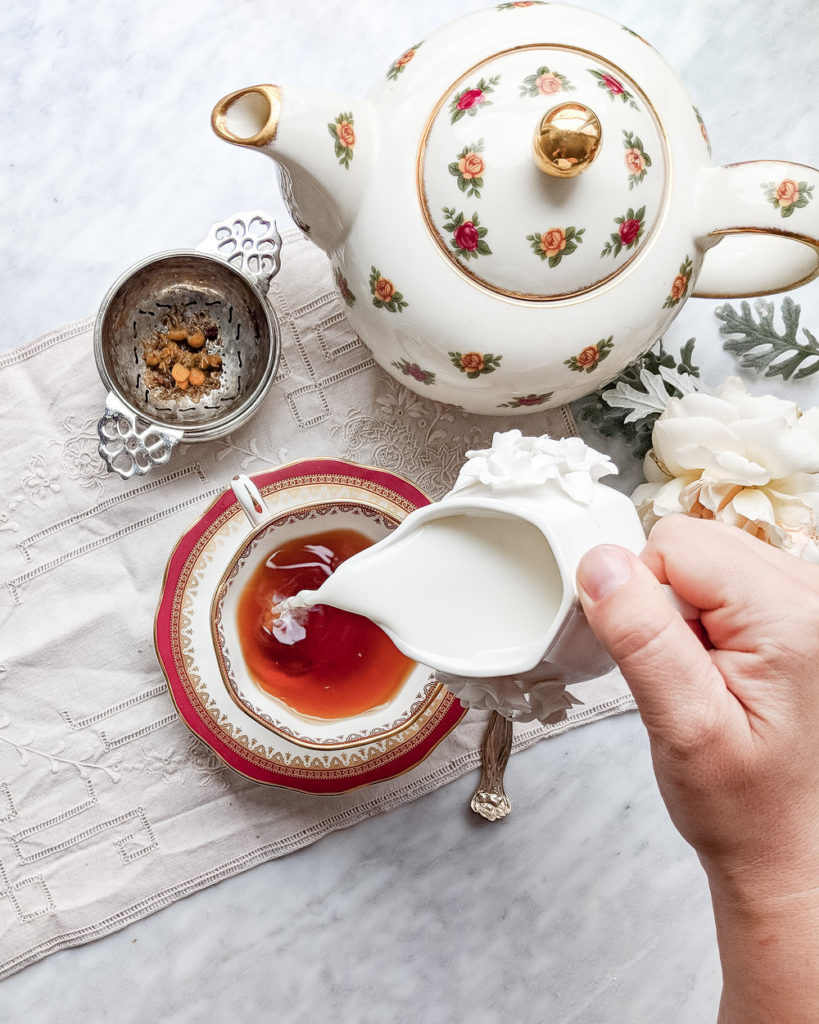
Which brings us to today’s blog post! I’ve decided to do a monthly feature on the caffeine-free (or very low caffeine) teas I’m testing out. If I’m going on a pleasant journey, might as well bring you all along for the ride, right?
Before I launch into this month’s tea, though, a few words on what this blog series is not.
This is not an expert manual for how to drink tea. I don’t pretend to be a tea connoisseur who can tell the difference between particular varietals. I don’t know the rules for drinking tea, and what few rules I do know, well, I tend to break them.
This is not a health guide. I make no claims for any benefits of any particular tea, and you won’t see me sharing teas specifically aimed toward weight loss or detoxing. I’m not a doctor, and I’m definitely not your doctor.
This is not meant to shame or pressure anybody into changing their drinking habits. People can get both defensive and aggressive when it comes to what we eat and drink, and understandably so. Food is an incredibly intimate and personal thing, and a lot of people feel that their identities are strongly connected to what they eat. I’m not here to judge you for what you like to consume or how you like to consume it.
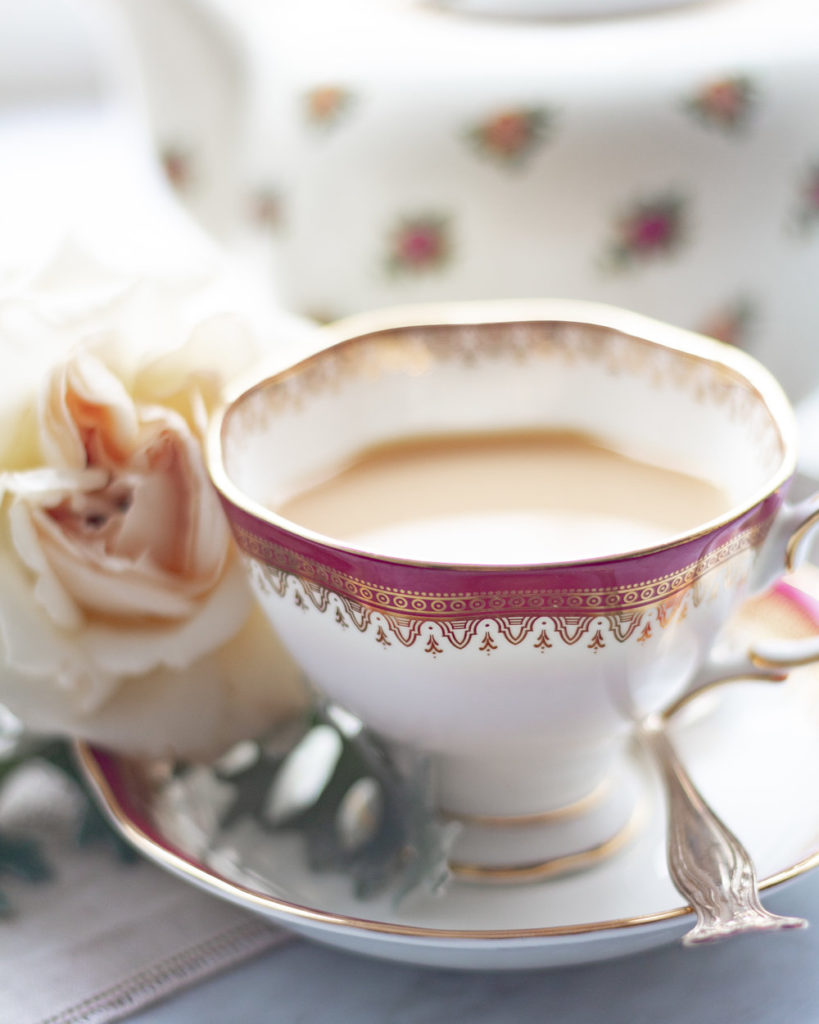
There, now! With that out of the way, let’s turn to this month’s tea. I ordered a few different varieties in the last month or so, and to be honest, there wasn’t much method to how I went about it. I just googled “best loose leaf teas,” scrolled through the offerings, and ordered the smallest container of any caffeine-free or low-caffeine varieties that seemed interesting.
The first one to arrive was the Bedtime Chai from California Tea House. This is one of the only loose-leaf tea companies I found that offered their teas in a .5 oz sample size, so I could decide if I liked it before buying a larger container. Spoiler alert: I did, and I’ll be buying more.
The Bedtime Chai has a warm, spicy flavor. Its ingredients include honeybush, valerian root, whole chamomile blossoms, vanilla bean, cinnamon sticks, rice, cloves, and nutmeg. Many of the ingredients, though not all of them, are organic (if that sort of thing is important to you when choosing a tea). This one has a relatively long steep time of 8-10 minutes, so be sure to let it sit long enough to really let the flavors come out. I only steeped my first cup for about four minutes because I didn’t read the instructions, and it was good, but not that exciting. The second cup hit all the right notes.
It feels a little strange to be drinking something with such a strong flavor of nutmeg and clove in springtime, but it’s also really soothing and pleasant. Good thing, too, because I drank mine while watching the second-to-last episode of Game of Thrones and needed all the soothing I could get.
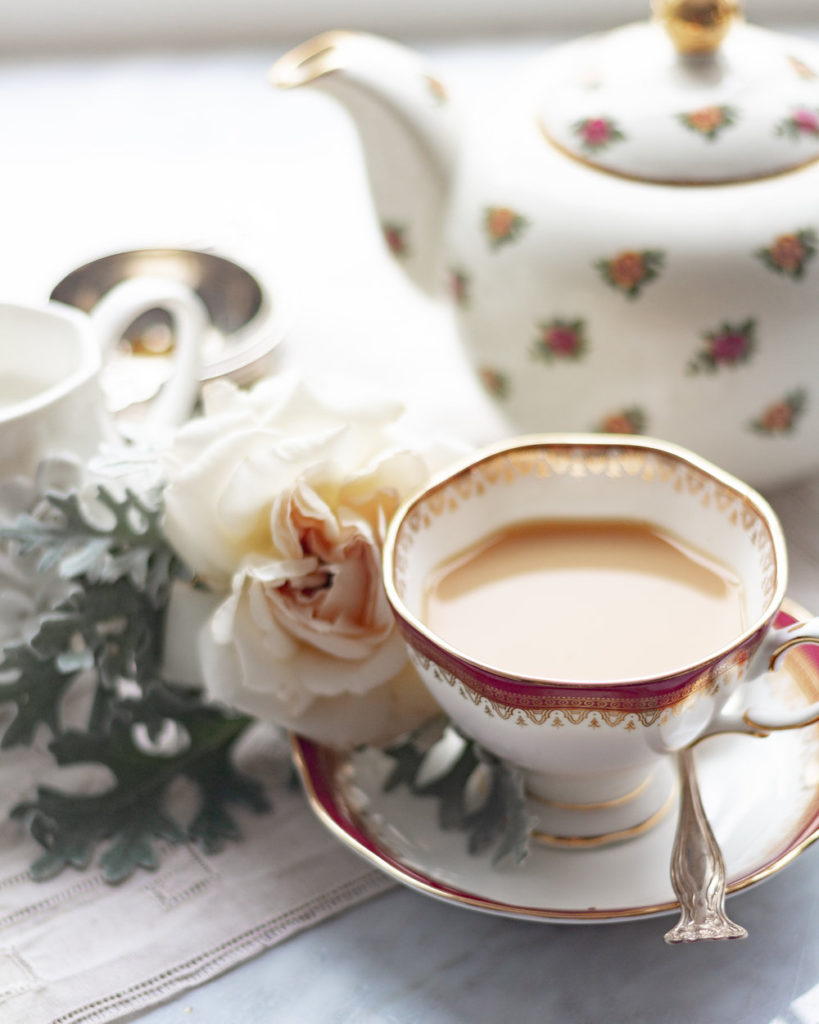
One important detail: as with any teas using whole chamomile blossoms, this one has little bits of tiny dried petals that will make their way through an average tea strainer. I couldn’t find my extra-fine mesh strainer (Little C was playing with it earlier), and I didn’t have any bags on hand, so I just used my regular strainer and fished out the petals with my thumb because I’m elegant like that. Plan for how you’re going to handle that if the little petal bits bother you.
I’ve gotten a lot of questions about my teaware over the years, so this is probably as good an opportunity as any to share a bit of that with you here, too. Again: I don’t think this is the right way to drink tea or the best way to drink tea. I’m just a fusspot who loves floral teacups and teapots, so that’s what I use.
The pot is a vintage Royal Albert pot that my sister found for me in a thrift store years ago. It’s a casual variant on the Old Country Roses pattern. They’re not in production anymore, but they’re not that old (mine is stamped 1998), so you can still find lots of used ones online. Here’s a great deal on eBay if you’re looking for something similar.
The cup was part of Royal Albert’s 100th anniversary celebration collection. This pattern is the 1980s Holyrood reissue. Royal Albert seems to have pivoted in the last five years toward only pastels, which is a shame because a lot of their older designs in darker colors were beautiful, too. As a result, this one has been discontinued already, but there are bright spots. You can find the teacups on eBay, and there are lots of original Holyrood pieces still floating about if you really like the style.
The teaware definitely gets used and used often. I’m a big fan of finding ways to make everyday moments just a little more special, and a fancy teacup on a random weekday is a surefire way to do just that.
If you’ve got recommendations for herbal or low-caffeine teas that you think I might like, please leave a comment and let me know! This is a fun journey and we’re only just getting started.
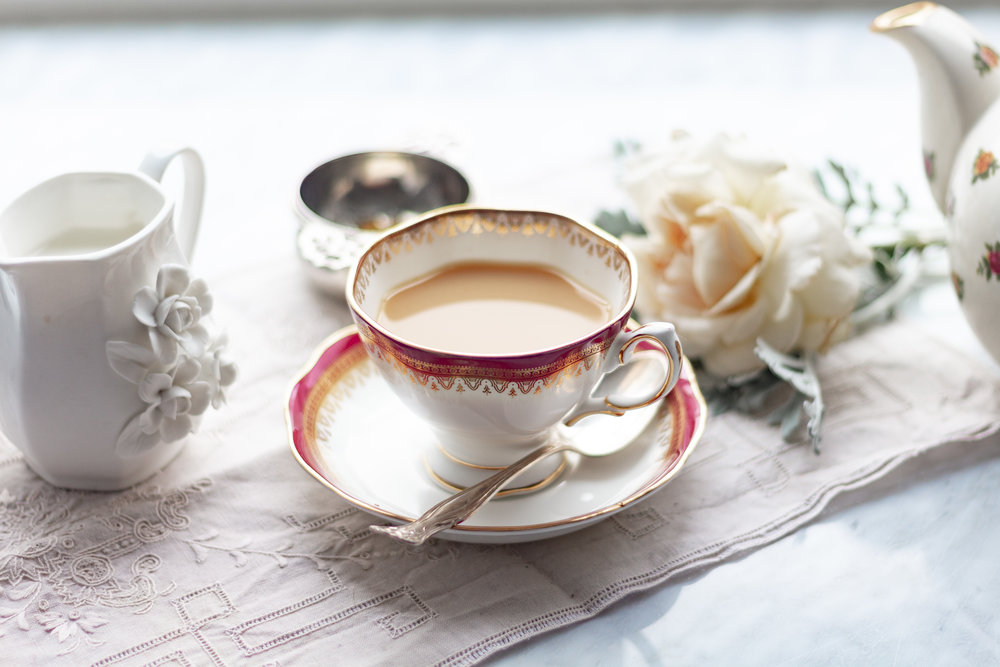
Let’s stay connected!
Join my newsletter for 30% off all new releases, regular updates with helpful tips and tricks, first crack at registration for upcoming workshops, exclusive discounts, and more.
Join the A Bee In The Bonnet Facebook Group to participate in knitalongs and other fun community events
Come hang out with me on the A Bee In The Bonnet TikTok
Follow along on the A Bee In The Bonnet Instagram
Get inspired via the A Bee In The Bonnet Pinterest

